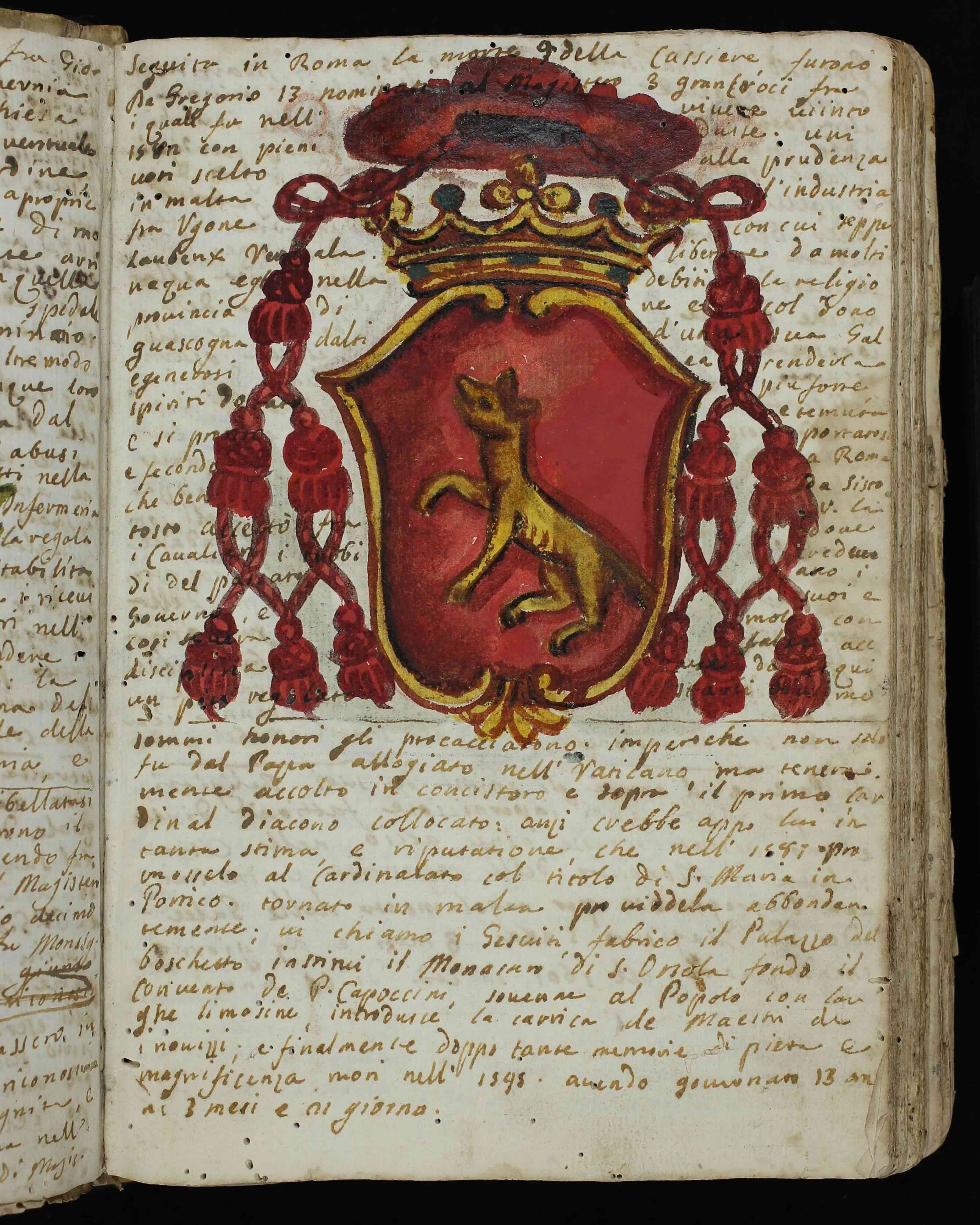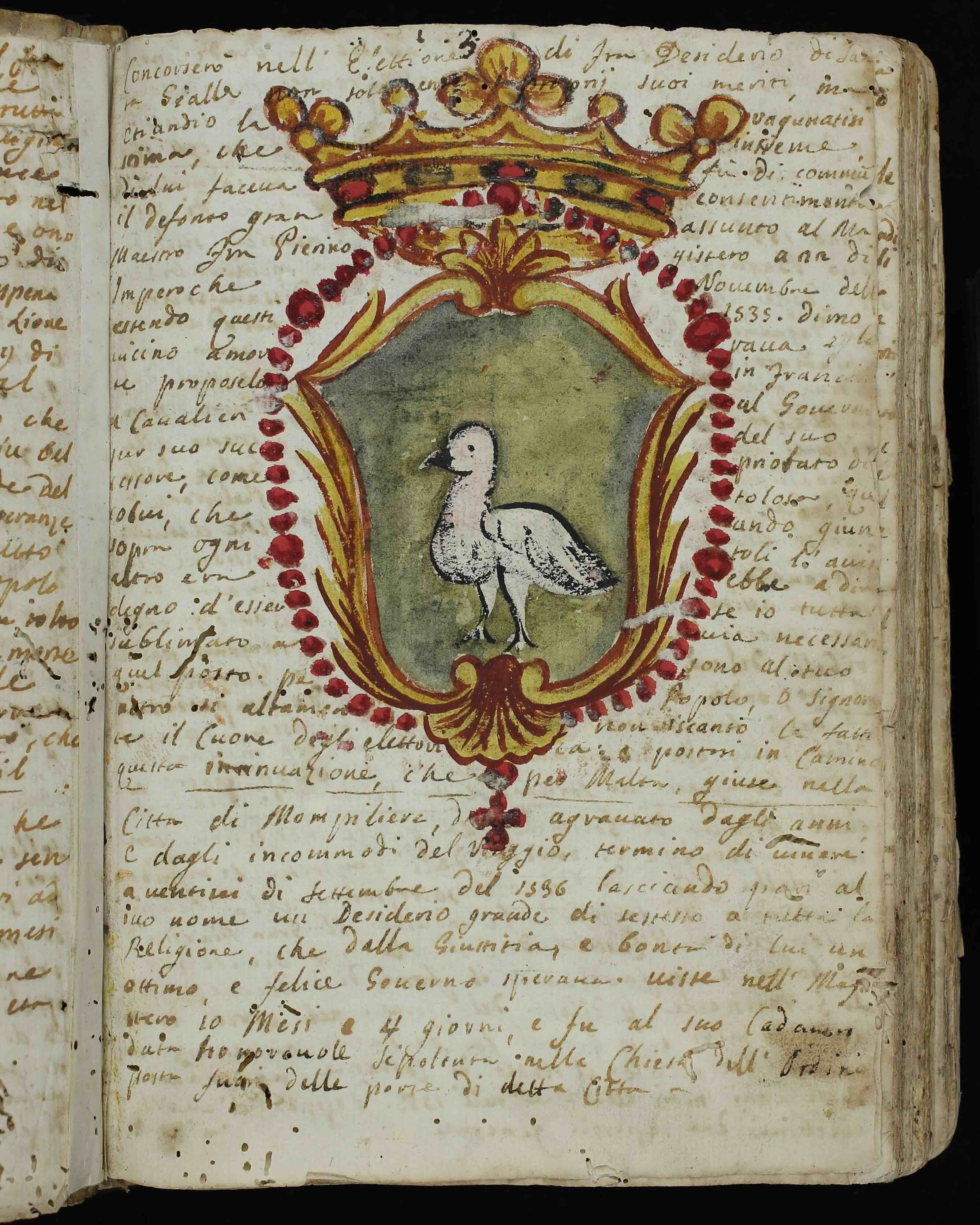Lions And The Grand Masters Of The Order Of Saint John Of Jerusalem
Lions and the Grand Masters of the Order of Saint John of Jerusalem
This story is part of an ongoing series of editorials in which HMML curators and catalogers examine how specific themes appear across HMML’s digital collections. From the Malta collection, Dr. Daniel K. Gullo has this story about Animals.
In late medieval tournaments, banners, trumpets, horses, and the sound of arms clashing created a martial atmosphere centered on the knight in plate armor mounted on a charger. These sounds and sights were augmented with splashes of color, as the shields of knights displayed the coats of arms of their respective families.
These coats of arms often employed a device, also called a “charge,” as a symbol representing the family. Animals were commonly used as charges, given their symbolic importance and ease of recognition in a crowd (for example, while attending court or on a battlefield).
Considered the king of animals, lions frequently appeared on coats of arms used by noble families in Europe. As symbols of bravery, strength, and nobility, they extolled the martial virtues associated with a class of warriors whose identity rested on their ability to carry arms. It’s not surprising that we find lions in the family coats of arms of the Grand Masters of the Order of Saint John of Jerusalem.
A handwritten book of heraldry—written in Malta in the late 18th century and now held in the Archivum de Piro at the Casa Rocca Piccola in Valletta, Malta—helps illustrate this use of lions as charges. Its pages display the coats of arms of the families of Grand Masters after the Order gained control of the island of Malta in 1530.
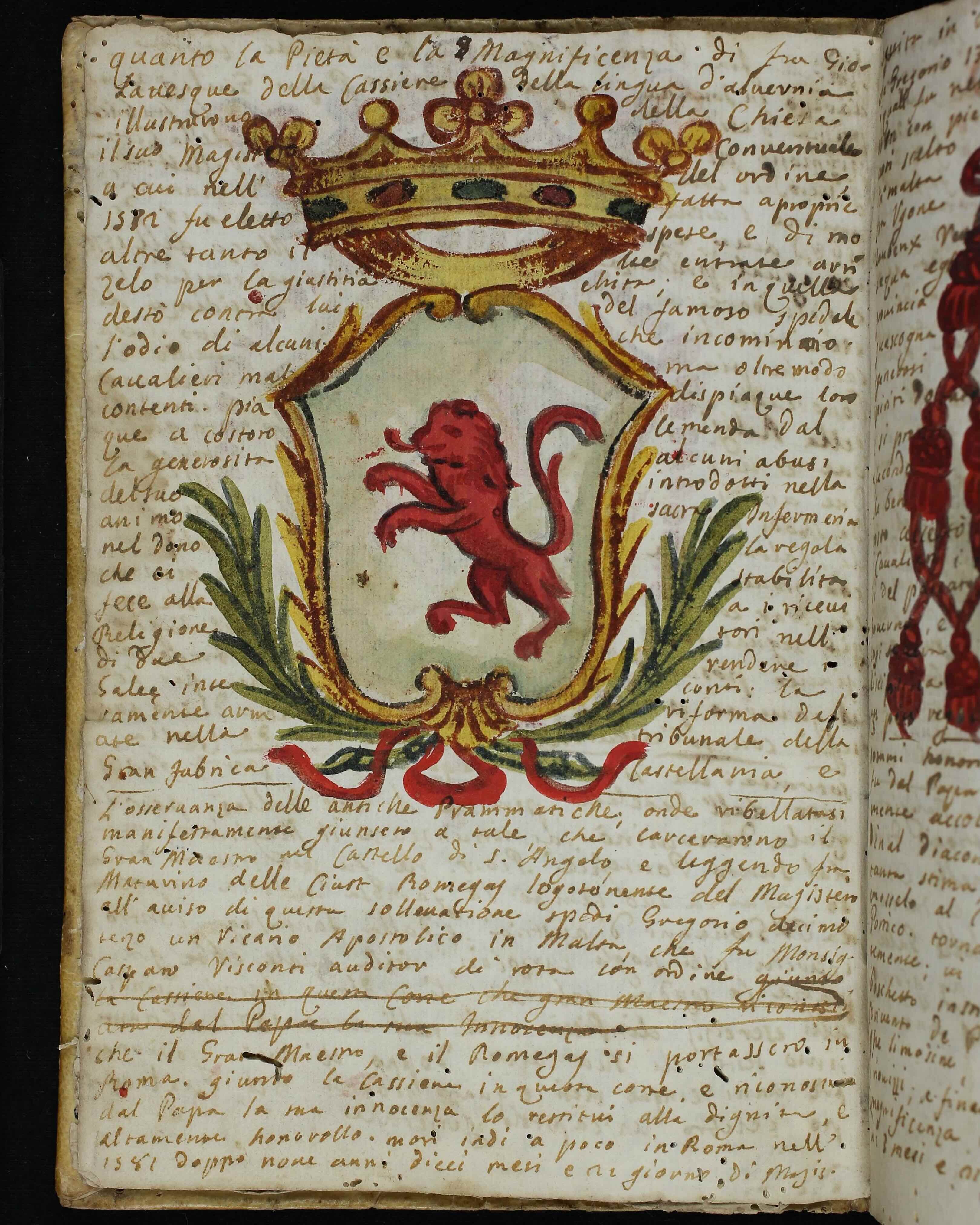
The most basic use of a lion as a charge can be seen in the family coat of arms of Grand Master Jean L’Evesque de La Cassière. The arms are a simple field of white with a red lion rampant (D’argent, à lion rampant de gueules). On the other hand, the family coat of arms of Grand Master Jean de Valette is more complex. Here we see a coat of arms parted in half by a vertical line (party per pale): the right (dexter) has a red field and a silver gyrfalcon with its right talon raised, and the left (sinister) has a red field with a golden lion rampant (parti à 1 de gueules à gerfàt d’argent, la patte dextre levée; parti à 2 de gueules à lion rampant d’or).
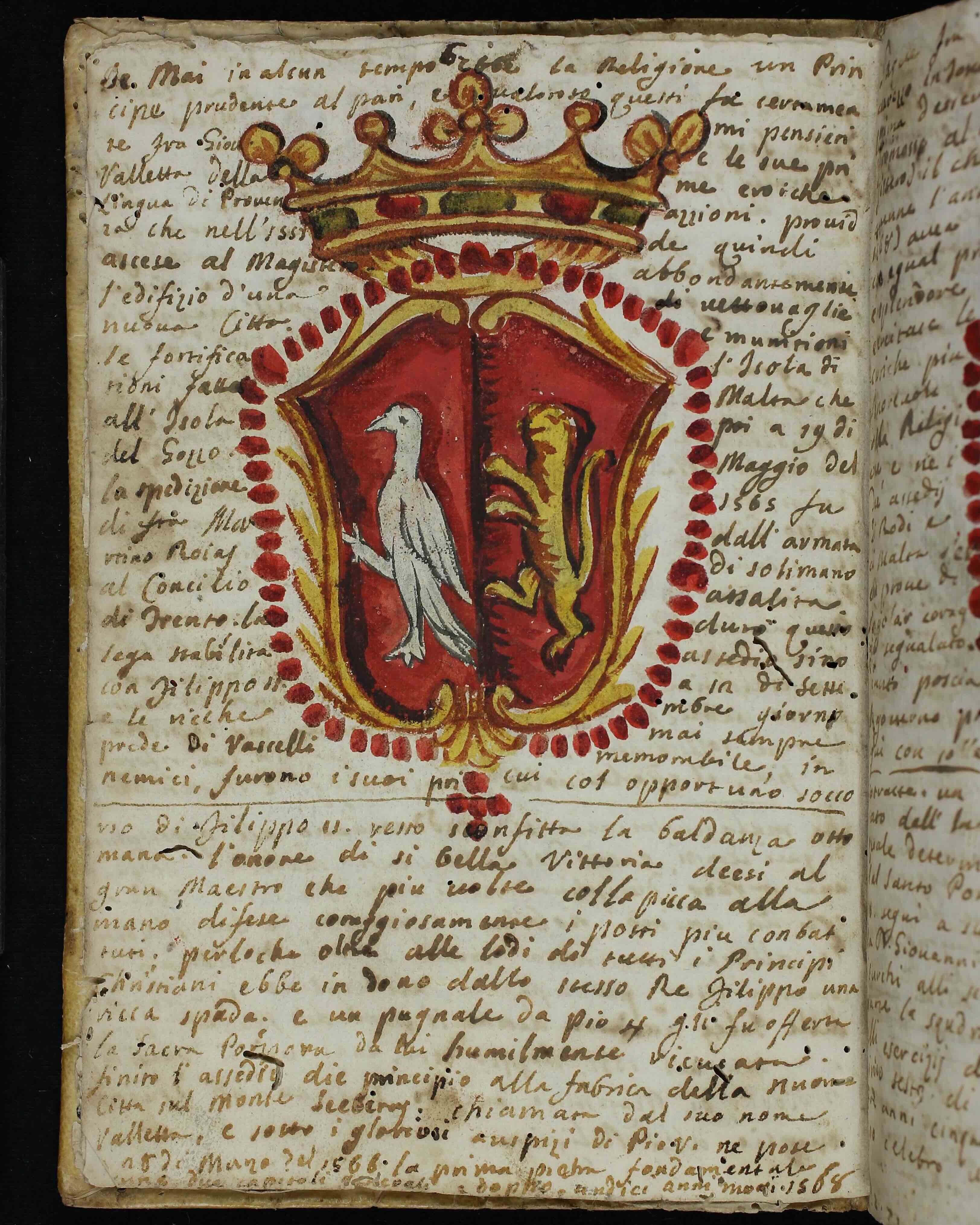
Grand Master António Manuel de Vilhena’s family coat of arms was parted in half by a horizontal line (party per fess): the top part, or chief, has a field of white with a red lion rampant, and the lower part, or base, has a red field with a golden winged arm holding an upright silver sword with gilded hilt (parti à 1 d’argent à lion rampant de gueules; parti à 2 de gueules à une main ailée d’or tenant une épée d’argent garnie d’or, posée en pal).
In a variation of Grand Master de Vilhena’s arms associated with the city of Floriana (officially founded by de Vilhena in 1724), the red lion rampant has a golden head. The artist, in this case, struggled with the illustration of the lion rampant, as it was a challenge to fit the vertical lion into the horizontal space. Instead, the lion was illustrated as a walking lion (lion passant).
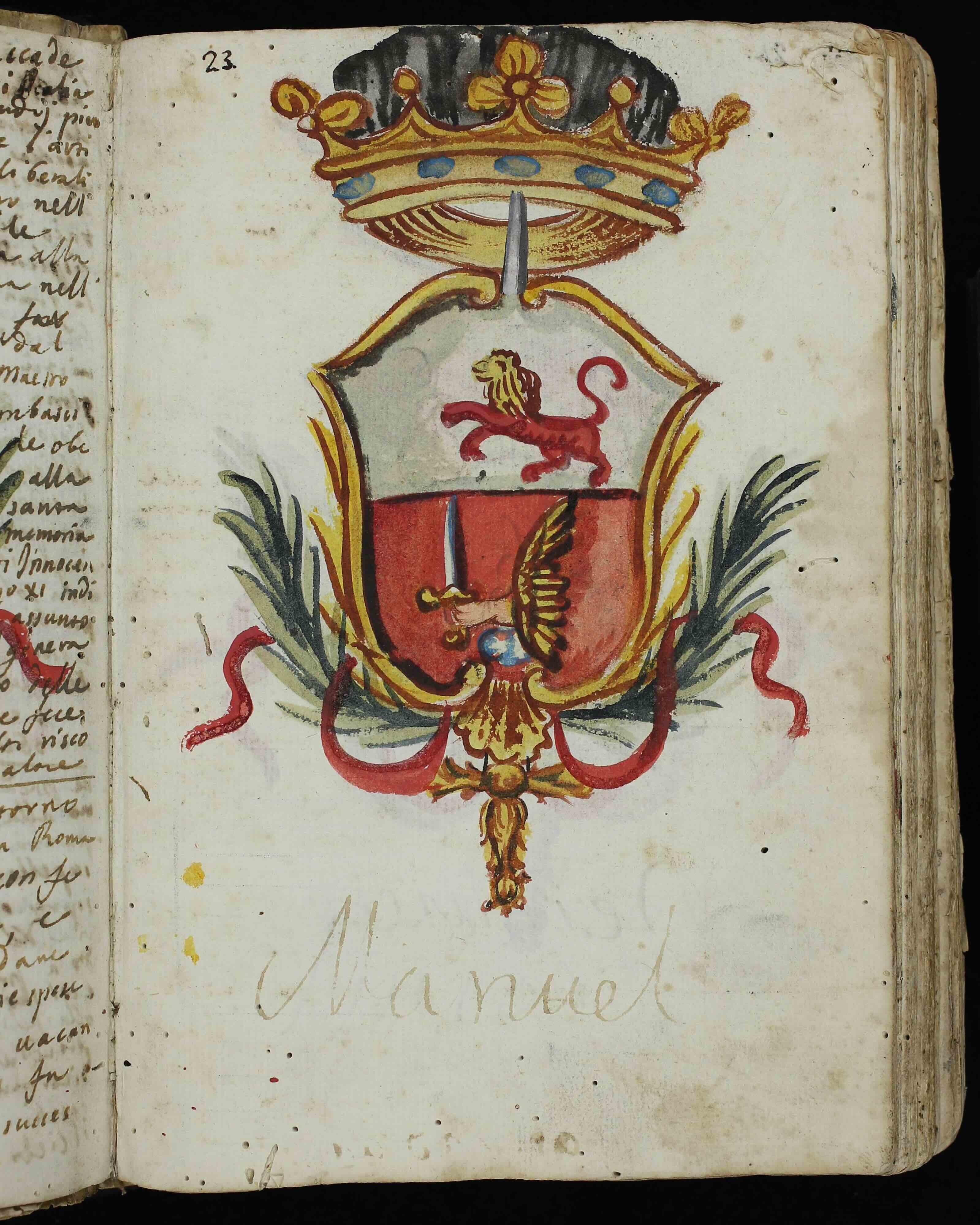
Other animals were also used as charges in the family coats of arms of the Grand Masters of the Order of Saint John. These included wolves, swans, and peacocks. Their survival in the art and buildings of Malta reminds us not only of the Grand Masters’ role as patrons. The variety of arms that we see preserved across the country reveals the diversity of regions and families who sent their sons to the island to become knights of the Order of Saint John. And that is a story for another time.
